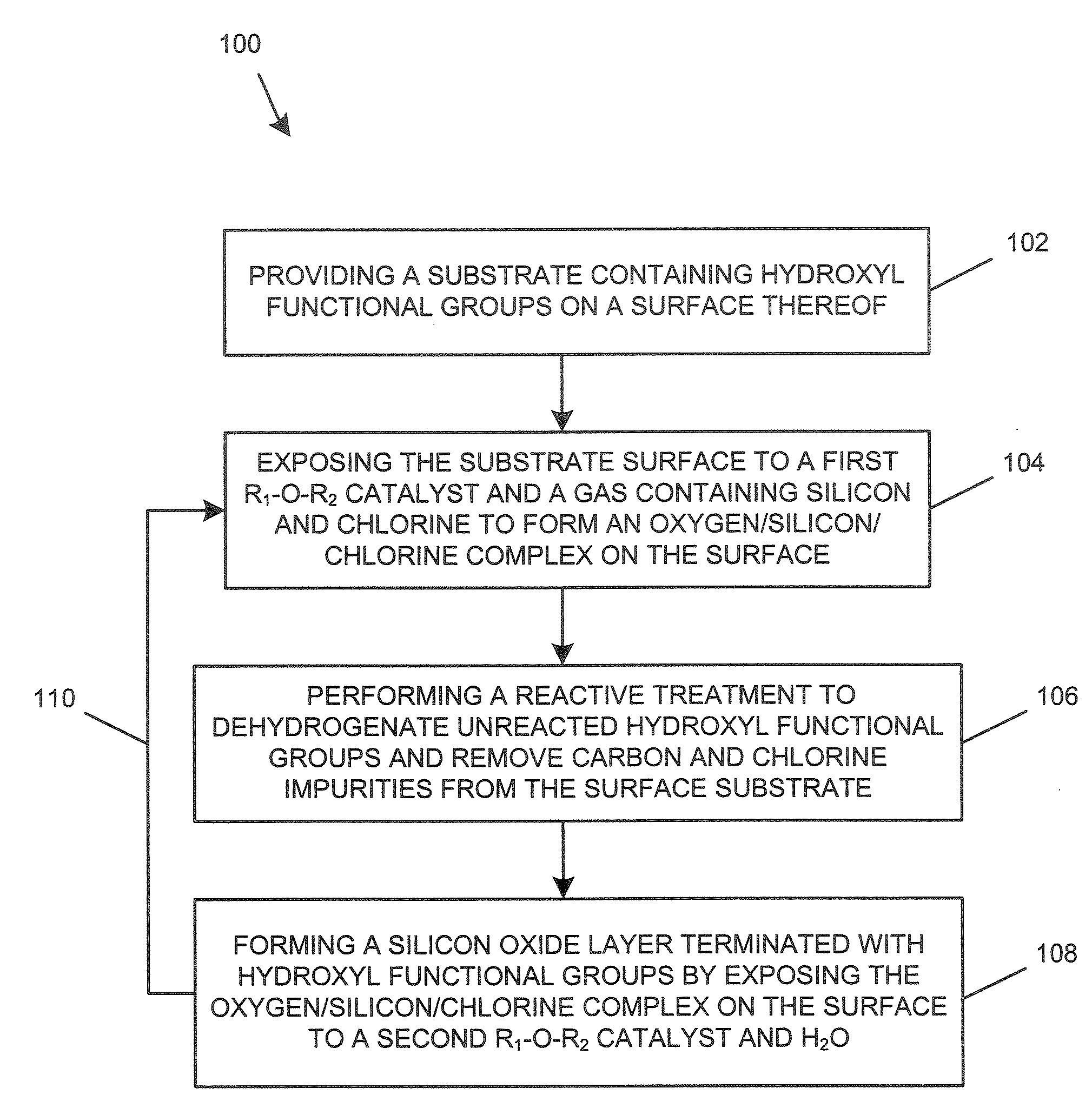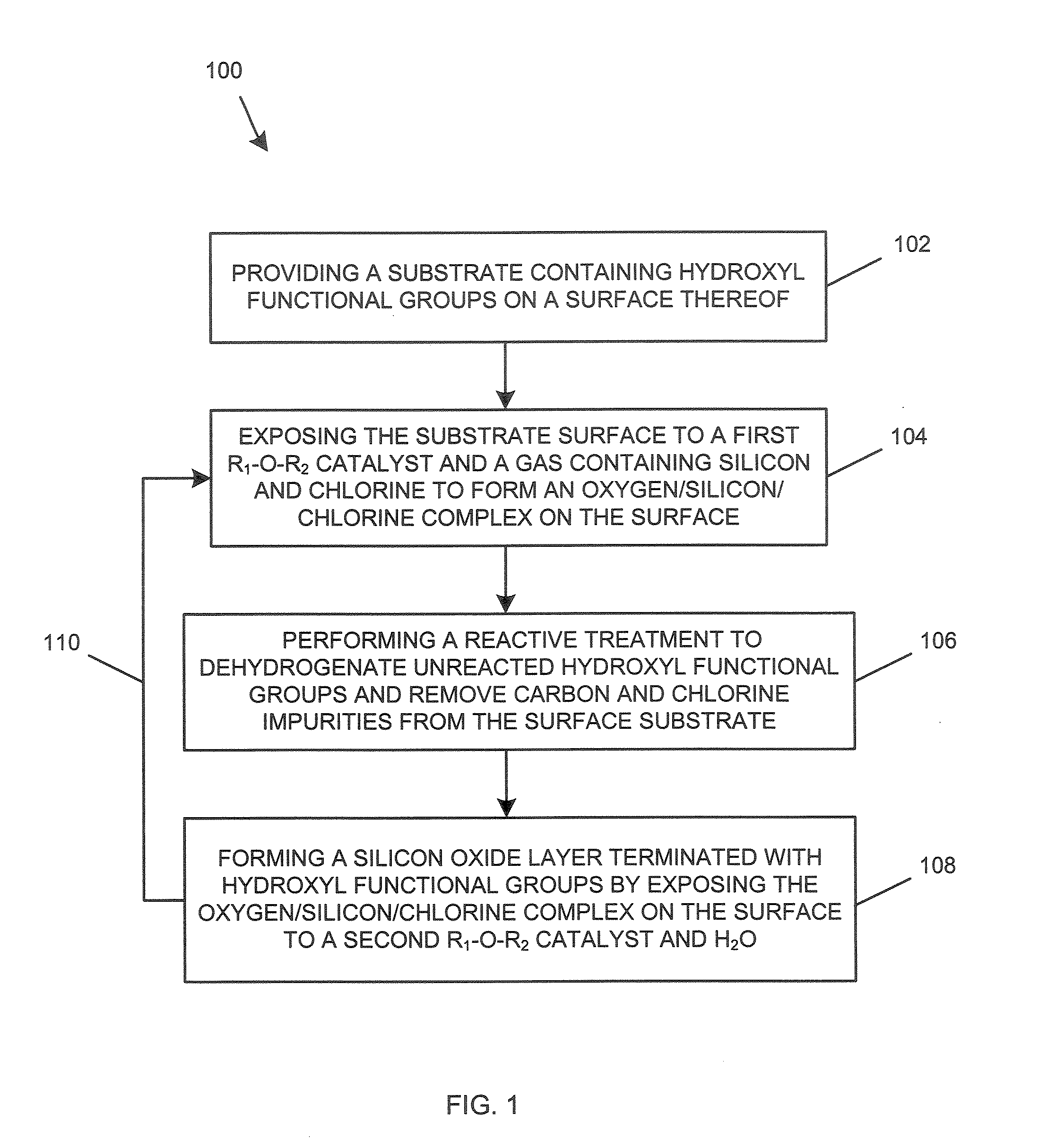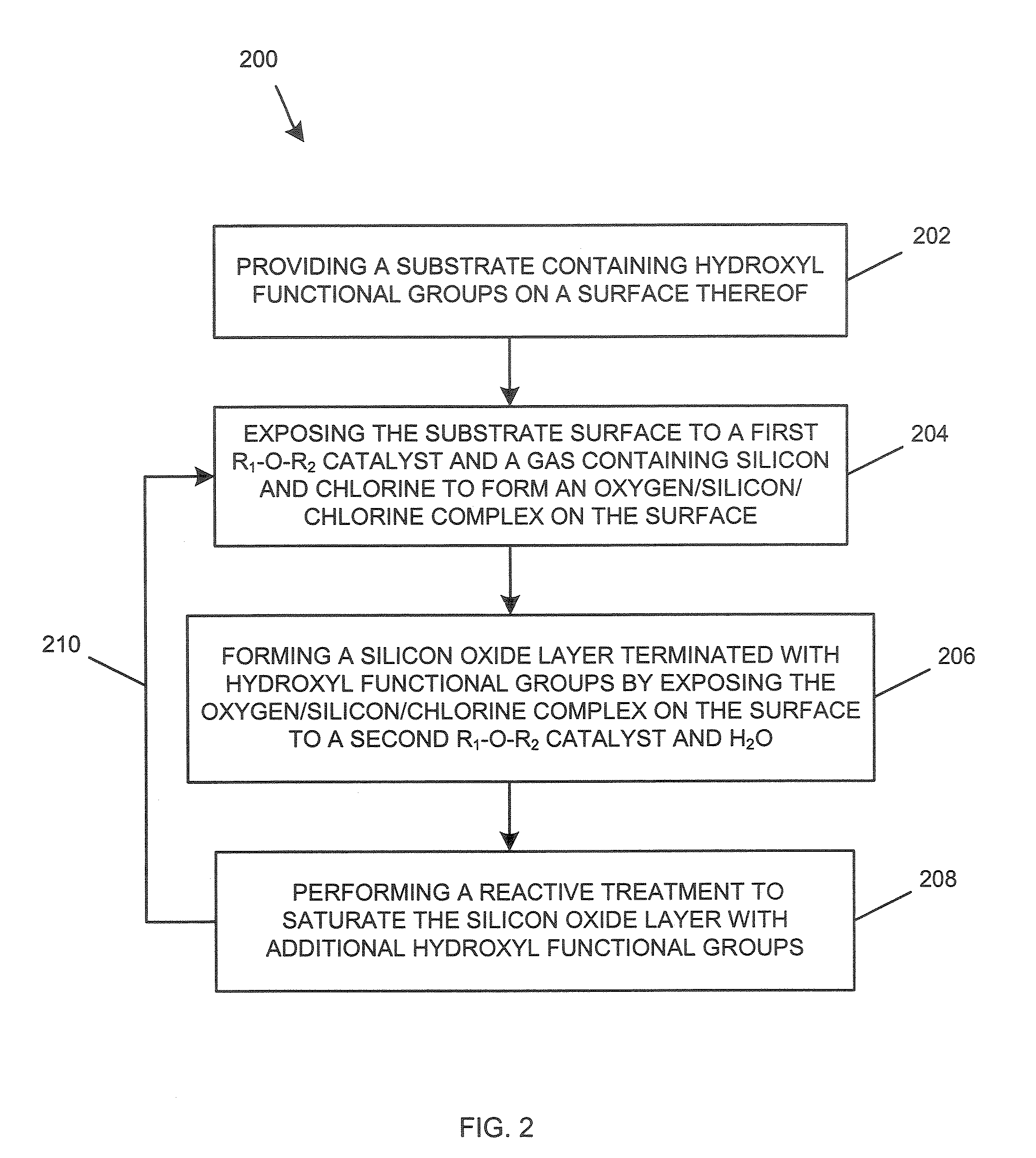Catalyst-assisted atomic layer deposition of silicon-containing films with integrated in-situ reactive treatment
a technology of catalyst-based ald and silicon-containing films, which is applied in the direction of resistive material coating, superimposed coating process, thermoelectric devices, etc., can solve the problems of high temperature, low deposition temperature, and many drawbacks of catalyst-based ald of siosub>2 /sub>film in the prior art, so as to reduce or eliminate the need for undetectable high-temperature post-deposition processing
- Summary
- Abstract
- Description
- Claims
- Application Information
AI Technical Summary
Benefits of technology
Problems solved by technology
Method used
Image
Examples
Embodiment Construction
[0019]Embodiments of the invention provide a method of depositing a silicon-containing film on a functionalized substrate at room temperature or near room temperature using catalyst-based ALD integrated with one or more in-situ reactive treatment(s). Due to the reduced impurity levels in the as-deposited silicon-containing films, high-temperature post-deposition processing may be reduced or eliminated, thereby maximizing the benefits gained by the low temperature catalyst-assisted ALD processing provided by embodiments of the invention.
[0020]Using catalyst-assisted ALD of a SiO2 film as an example for a silicon-containing film, catalyzed self-terminating surface reactions applied in a binary reaction sequence have focused on dividing a SiCl4+2H2O→SiO2+4HCl reaction into two half-reactions:
Si—OH*+SiCl4+Catalyst→SiO—Si(—Cl*)3+HCl+Catalyst (A)
Si—Cl*+H2O+Catalyst→Si—OH*+HCl+Catalyst (B)
[0021]where the asterisks designate the surface species and the half-reactions are performed in an A...
PUM
| Property | Measurement | Unit |
|---|---|---|
| Temperature | aaaaa | aaaaa |
Abstract
Description
Claims
Application Information
 Login to View More
Login to View More - R&D
- Intellectual Property
- Life Sciences
- Materials
- Tech Scout
- Unparalleled Data Quality
- Higher Quality Content
- 60% Fewer Hallucinations
Browse by: Latest US Patents, China's latest patents, Technical Efficacy Thesaurus, Application Domain, Technology Topic, Popular Technical Reports.
© 2025 PatSnap. All rights reserved.Legal|Privacy policy|Modern Slavery Act Transparency Statement|Sitemap|About US| Contact US: help@patsnap.com



